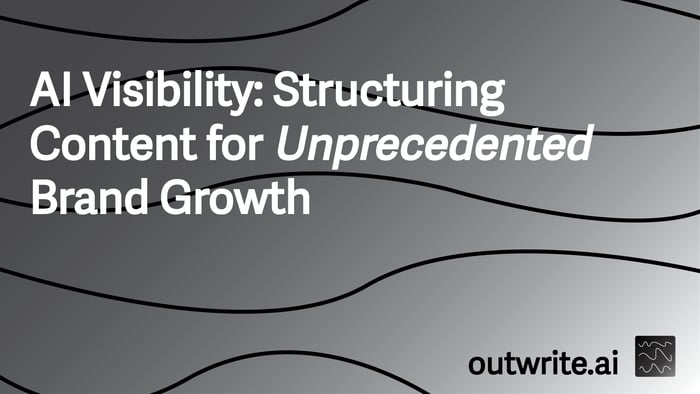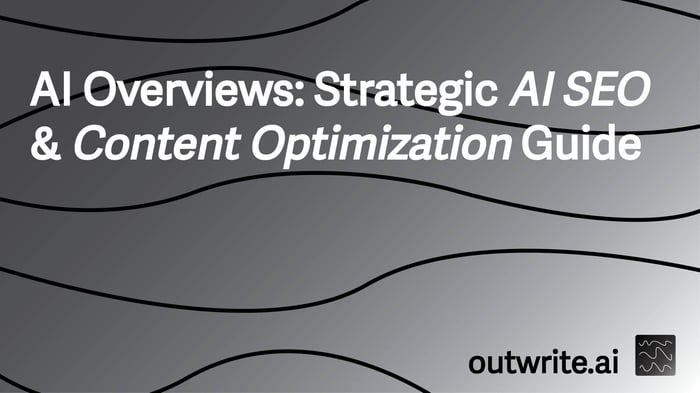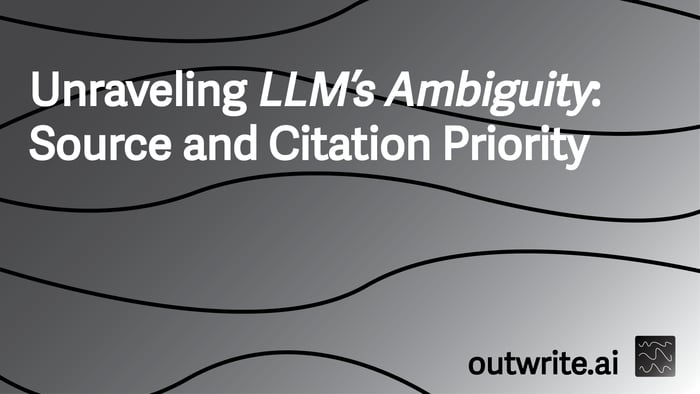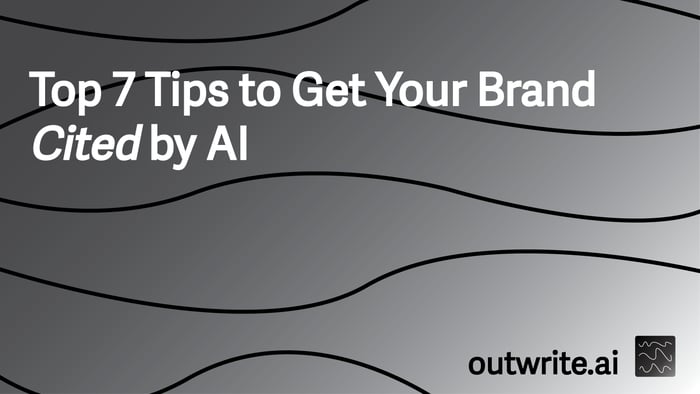Table of Contents
- The AI Era: Redefining Brand Visibility and Growth
- AI-Driven Buyer Journeys: A Paradigm Shift in Consumer Behavior
- Optimizing for AI Overviews and Answer Engine Optimization (AEO)
- Strategic Content Architecture for AI Growth
- Leveraging Structured Data and Metadata for AI Recognition
- AI-Powered Personalization and Interactive Content Strategies
- Measuring AI Visibility and Iterative Content Refinement
- Case Studies: Brands Winning with AI Visibility
- Implementation Guide: Structuring Your Content for AI Growth
- Frequently Asked Questions (FAQ)
- Conclusion
The landscape of digital marketing is undergoing a profound transformation, driven by the rapid advancement and integration of artificial intelligence. As AI systems become increasingly sophisticated, they are reshaping how consumers discover information, interact with brands, and make purchasing decisions. This shift necessitates a fundamental re-evaluation of traditional content strategies, moving beyond conventional SEO to embrace what is now termed "AI Visibility." Brands that proactively structure their content for AI growth will not only survive but thrive in this new era, securing their position as authoritative sources in AI-mediated environments.
This comprehensive guide delves into the critical aspects of achieving AI visibility, exploring the evolution of buyer journeys, the impact of AI Overviews, and the strategic content architecture required for success. We will examine how leveraging structured data, implementing AI-powered personalization, and adopting iterative refinement processes are paramount. Through detailed analysis, real-world case studies, and actionable implementation advice, this article aims to equip brands with the knowledge and tools to optimize their digital presence for unprecedented AI growth.
The AI Era: Redefining Brand Visibility and Growth
The advent of artificial intelligence has fundamentally altered the definition of brand visibility. No longer solely dependent on search engine rankings, visibility in the AI era means positioning a brand to be recognized as the definitive answer or recommendation across a diverse array of AI-powered platforms. This includes large language models (LLMs), voice assistants, and visual AI systems, which are increasingly mediating consumer interactions and information retrieval. The shift from traditional SEO to "answer engine optimization" (AEO) is a critical development that brands must address to maintain relevance and drive AI growth.
This new paradigm emphasizes the importance of trust, relevance, and authority, as AI systems prioritize content that is not only accurate but also consistently cited and recognized as credible. According to Golin, over 90% of AI visibility now stems from citations of earned media rather than direct traffic, underscoring the rising importance of public relations and authoritative mentions over traditional click-based SEO metrics. This monumental shift mandates a strategic pivot in how content is created, structured, and distributed to ensure it is discoverable and citable by advanced AI algorithms.
The market data unequivocally supports this trend. The global AI market, valued at approximately $279 billion in 2024, is projected to reach an astounding $1.81 trillion by 2030, growing at an annual rate near 33%. This explosive growth is mirrored in investment, with AI investments surging 62% in 2024 to $110 billion, even as overall startup funding declined, as reported by Synthesia. These figures highlight the pervasive influence of AI and the imperative for brands to adapt their strategies for AI growth.
Brands must recognize that AI visibility goes beyond mere presence; it's about being the trusted source that AI systems recommend. This requires a comprehensive approach to content creation that focuses on clarity, conciseness, and semantic richness, ensuring that AI can easily understand, process, and cite the information. The goal is to become an indispensable resource for AI, thereby driving sustained brand growth and market leadership in an increasingly AI-centric world.
What is AI Visibility?
- Definition: AI visibility is the ability of a brand's content to be recognized, understood, and cited by AI-powered platforms, including LLMs, voice assistants, and AI Overviews, as a definitive and authoritative source.
- Distinction from SEO: Unlike traditional SEO, which focuses on ranking for keywords to drive clicks, AI visibility prioritizes being the source of answers and recommendations, often without a direct click to the brand's website.
- Key Components: It encompasses earned media citations, structured data, semantic content, and consistent digital identity management that signals authority to AI systems.
- Importance for Brand Growth: High AI visibility leads to increased brand authority, trust, and recognition, even if direct traffic metrics temporarily shift, ultimately driving higher-value user engagement and conversions.
AI-Driven Buyer Journeys: A Paradigm Shift in Consumer Behavior
The way consumers research and make purchasing decisions has been fundamentally reshaped by artificial intelligence, creating what are now known as AI-driven buyer journeys. This shift is particularly pronounced among younger demographics and in the B2B sector. According to Terakeet, 67% of Gen Z and 53% of millennials are now using AI tools instead of traditional search engines like Google for their research. This trend extends across the consumer base, with 39% of all consumers leveraging generative AI for research before making purchases.
The impact is even more significant in the B2B landscape. Terakeet's research indicates that 89% of B2B buyers use generative AI in their buying process, with a staggering 95% expecting to increase their reliance on AI within the next year. For high-value solutions exceeding $1 million, over 90% of B2B buyers who use AI-guided research report positive outcomes. These statistics underscore a clear and irreversible trend: AI is not just a tool; it's becoming the primary intermediary in the buyer's journey, making AI growth strategies indispensable for brands.
This evolution means that brands must optimize their content not just for human readers or traditional search algorithms, but for AI systems that interpret, summarize, and recommend information. The focus shifts from merely appearing in search results to being the authoritative source that AI chooses to cite. Content needs to be structured in a way that is easily digestible by AI, featuring clear, concise answers, structured data, and a strong semantic foundation. This ensures that when an AI tool is asked a question relevant to a brand's offerings, that brand's content is the one that provides the definitive answer.
Understanding and adapting to these AI-driven buyer journeys is crucial for sustained brand growth. It requires a proactive approach to content strategy, emphasizing clarity, authority, and semantic optimization to ensure that a brand's message resonates with both AI systems and the end-users they serve. Brands that fail to adapt risk becoming invisible in an increasingly AI-mediated world, losing out on critical engagement and conversion opportunities.
How AI Reshapes Buyer Journeys
- Information Discovery: Consumers increasingly turn to AI chatbots and generative AI tools for initial research, bypassing traditional search engines.
- Decision Making: AI provides summarized answers and recommendations, influencing purchase decisions directly without requiring users to visit multiple websites.
- Personalization: AI tailors content and product suggestions based on user preferences and past behavior, creating highly individualized buyer paths.
- Trust and Authority: AI systems prioritize credible and authoritative sources, making earned media and consistent brand messaging critical for being cited.
Optimizing for AI Overviews and Answer Engine Optimization (AEO)
The emergence of AI Overviews (formerly Search Generative Experience or SGE) in Google search results marks a pivotal moment in the evolution of search and content strategy. These AI-generated summarized answers are appearing for 9.46% of all keywords, with a significant 116% increase since the March 2024 update, according to WordStream. This development profoundly impacts traditional SEO, as AI Overviews often reduce click-through rates by approximately 70%, as users obtain answers directly from the summary, yet they drive higher-value user engagement, as noted by CMO Alliance.
This shift necessitates a move towards Answer Engine Optimization (AEO), where the goal is not just to rank high, but to be the source that AI systems cite and summarize. AI Overviews frequently cite brand mentions, creating a strong correlation with brand visibility. To achieve this, brands must structure their content to be easily digestible and authoritative for AI. This involves creating "answer hubs" with clear, concise TL;DR sections, comprehensive FAQs, and robust schema markup. Such structuring directly improves the likelihood of content being included in AI-generated responses, thereby enhancing AI growth.
The implications for content marketing are significant. While Google search volume grew 21.64% in 2024, and the total number of Google searches remains 373 times higher than ChatGPT queries, the influence of AI-driven search experiences is rapidly gaining ground, as highlighted by CMO Alliance. This means that even as traditional search continues, the quality and structure of content for AI citation are becoming paramount. Brands must focus on providing definitive, well-supported answers to common queries within their niche, ensuring their content is a prime candidate for AI summarization.
Optimizing for AI Overviews means adopting a content strategy that prioritizes clarity, conciseness, and semantic accuracy. It's about becoming the trusted expert that AI systems turn to for information. By focusing on AEO, brands can ensure their message is not only seen but also accurately represented and cited by AI, driving a new form of brand growth centered on authority and direct answers.
Key Strategies for AEO
- Create Answer Hubs: Develop dedicated content sections or pages that provide comprehensive, direct answers to specific questions within your niche.
- Implement TL;DR Summaries: Include brief, clear "Too Long; Didn't Read" summaries at the beginning of articles to help AI quickly grasp the main points.
- Utilize FAQ Sections: Structure content with clear FAQ sections using Schema.org markup to signal question-and-answer pairs to AI.
- Focus on Authority: Ensure content is well-researched, accurate, and backed by credible sources to establish your brand as an authority.
- Semantic Richness: Use clear, unambiguous language and relevant terminology to help AI understand the context and meaning of your content.
Strategic Content Architecture for AI Growth
Achieving significant AI growth requires a fundamental rethinking of content architecture, moving beyond keyword-centric approaches to an entity-based, semantically rich framework. This involves structuring content in a way that AI systems can easily understand, categorize, and cross-reference, thereby increasing the likelihood of citation and recommendation. The goal is to build a digital presence where every piece of content contributes to a cohesive, authoritative brand narrative that AI can readily interpret.
One of the core principles of this new architecture is the development of entity-based content. This means mapping out your brand’s products, services, industries, and geographic entities as discrete, well-defined concepts. By clearly defining these entities and their relationships, brands can provide AI with a robust understanding of their domain. This is critical because AI systems rely on understanding entities and their context to deliver accurate and relevant responses. Tools like outwrite.ai can automate the creation and distribution of content perfectly structured for both traditional SEO and AI visibility, ensuring this entity-based approach is consistently applied.
Building comprehensive topic clusters and answer hubs is another cornerstone of effective AI content architecture. Instead of isolated articles, content should be organized into interconnected hubs that thoroughly cover a specific topic from multiple angles. Each hub should feature FAQs, concise summaries (TL;DRs), and step-by-step answers, all designed to qualify for AI Overview snippets and answer boxes. This structured approach ensures that AI can easily extract definitive answers, positioning the brand as a go-to source for information, as emphasized by Terakeet.
Furthermore, content architecture for AI growth demands a consistent and comprehensive digital identity management strategy. This involves ensuring that brand information, values, and offerings are uniformly presented across all digital touchpoints. Such consistency provides authoritative signals to AI systems, cementing brand authority over time. By adopting these architectural principles, brands can create a content ecosystem that is not only discoverable but also highly citable by AI, leading to sustained AI growth and enhanced market presence.
Elements of AI-Optimized Content Architecture
- Entity Mapping: Define and interlink all key concepts related to your brand (products, services, industries, locations) to create a semantic network.
- Topic Clusters & Answer Hubs: Organize content around broad topics, with pillar pages linking to detailed sub-topics and providing comprehensive answers.
- Semantic Content Design: Write content that is clear, unambiguous, and uses precise terminology, making it easy for AI to understand context and meaning.
- Consistent Digital Identity: Ensure brand information is uniform across all platforms to build a cohesive and authoritative digital footprint for AI recognition.
Leveraging Structured Data and Metadata for AI Recognition
In the quest for AI growth and enhanced visibility, the strategic implementation of structured data and meticulous metadata management are non-negotiable. These technical elements act as direct communication channels to AI systems, providing explicit signals about the nature and context of your content. Without properly structured data, even the most authoritative content may struggle to achieve optimal AI recognition, as AI algorithms rely heavily on these cues to interpret and categorize information.
Structured data, particularly in formats like JSON-LD, allows brands to describe their entities—products, services, locations, FAQs, reviews, and more—in a machine-readable format. This explicit tagging helps AI systems understand the relationships between different pieces of information and the overall context of your brand's offerings. For instance, using Schema.org markup for FAQs can directly qualify your content for rich results and AI Overview snippets, making it a prime candidate for AI citation. Tools like outwrite.ai are specifically designed to automate the generation and implementation of this critical structured data, ensuring content is perfectly optimized for AI visibility.
Beyond structured data, consistent and enhanced metadata across all digital assets is crucial. This includes title tags, meta descriptions, alt text for images, and Open Graph tags for social media. Each piece of metadata offers an opportunity to reinforce your brand's identity and content relevance to AI. Ensuring uniformity and accuracy in this metadata helps AI systems build a comprehensive and reliable profile of your brand, which is essential for cementing authority over time. Golin highlights that enhancing metadata and implementing structured data are key steps to improve how AI understands and associates brand content.
The impact of this technical optimization on AI growth cannot be overstated. By providing AI with clear, unambiguous signals through structured data and metadata, brands can significantly improve their chances of being cited in AI Overviews, recommended by voice assistants, and recognized by LLMs. This proactive approach ensures that content is not just present online, but actively understood and valued by the AI systems that increasingly mediate user interactions, ultimately leading to greater brand influence and visibility.
| Structured Data Type | AI Visibility Benefit | Example Schema.org Type | Impact on AI Growth |
|---|---|---|---|
| FAQPage | Directly answers user questions, qualifies for AI Overviews. | FAQPage | Increased citation in AI summaries, higher authority. |
| Product | Provides detailed product info, aids AI in recommendations. | Product, Offer | Better product visibility in AI-driven shopping experiences. |
| Organization | Defines brand identity, builds trust with AI. | Organization, LocalBusiness | Stronger brand recognition and authoritative signals. |
| Article | Clarifies content type and topic, improves AI comprehension. | Article, NewsArticle | Enhanced content discoverability and contextual understanding by AI. |
AI-Powered Personalization and Interactive Content Strategies
In the era of AI growth, personalization is no longer a luxury but a necessity. AI-powered personalization and interactive content strategies are crucial for engaging users in meaningful ways and ensuring brand messages resonate on an individual level. By leveraging AI to understand user preferences, behaviors, and contexts, brands can deliver highly relevant experiences that foster deeper connections and drive conversions. This approach moves beyond generic content delivery to a dynamic, adaptive interaction that AI systems can both facilitate and learn from.
One powerful application is the integration of AI tools for virtual try-ons and personalized recommendations. Companies like Sephora have successfully deployed AI-powered virtual artists that allow customers to try on beauty products using augmented reality (AR). This not only improves the online shopping experience but also leads to increased conversion rates and decreased product returns. Such interactive AI solutions enhance customer convenience and satisfaction, making the brand more appealing to AI-driven buyer journeys.
AI can also be used for creative brainstorming and visual content generation, sparking buzz and customer interaction. Heinz, for example, utilized DALL-E AI to generate creative ketchup designs, integrating customer input through social media campaigns. This resulted in 38% higher social media engagement compared to past campaigns and attracted significant media attention from major publications. Inviting user-generated AI content further boosts engagement and creates a dynamic, interactive brand experience that AI systems can recognize and promote.
Furthermore, AI enables real-time sentiment and behavioral analysis to tailor content dynamically. BMW partnered with IBM Watson for an AI-driven social media campaign that analyzed trends and user sentiments to deliver personalized content. This led to a 30% increase in social media engagement and enhanced real-time customer interactions, fostering stronger brand loyalty. By continuously adapting content based on AI insights, brands can ensure their offerings remain relevant and engaging, driving sustained AI growth and a competitive edge.
Benefits of AI-Powered Personalization
- Enhanced User Experience: Delivers tailored content, product recommendations, and interactive features that match individual user preferences.
- Increased Engagement: Personalized content is more likely to capture attention and encourage interaction, leading to higher time on site and lower bounce rates.
- Higher Conversion Rates: Relevant recommendations and streamlined experiences guide users more effectively through the buyer journey, boosting sales.
- Stronger Brand Loyalty: Demonstrating an understanding of customer needs through personalization builds trust and fosters long-term relationships.
- Creative Content Generation: AI assists in generating novel and engaging content ideas, visuals, and campaigns that resonate with target audiences.
Measuring AI Visibility and Iterative Content Refinement
In the rapidly evolving landscape of AI growth, traditional marketing metrics like clicks and direct traffic are becoming less reliable indicators of brand success. As AI Overviews reduce click-through rates by approximately 70%, brands must adopt new methodologies to measure their AI visibility and the impact on their overall growth. The focus shifts to understanding how often a brand is cited by AI, the quality of those citations, and the resulting influence on brand perception and high-value user engagement.
Measuring AI visibility involves tracking several key indicators. This includes monitoring AI snippet appearances, conversational agent mentions, and AI-enabled traffic using specialized analytic tools. Brands need to identify when their content is being summarized in AI Overviews, how their brand is being referenced by LLMs, and if they are being recommended by voice assistants. This requires a proactive approach to data collection and analysis, moving beyond standard Google Analytics reports to incorporate insights from AI-specific monitoring platforms. Tools like outwrite.ai can provide comprehensive analytics on AI visibility, helping brands track their performance in this new environment.
A critical component of this measurement strategy is systematic AI response testing and regular monitoring. Brands should continuously test how AI systems respond to queries related to their products, services, and industry. This involves posing questions to various AI platforms (e.g., ChatGPT, Google Bard, voice assistants) and analyzing the responses for brand mentions, accuracy, and sentiment. Based on these results, content can be iteratively refined to improve AI recognition and brand positioning. This iterative process can lead to 56% higher rates of positive adjustments in AI responses, according to Golin.
Ultimately, the goal is to attribute AI-influenced outcomes to business objectives. For B2B brands, this means tracking improved placements in AI Overviews and answer boxes, and measuring increases in qualified leads and influenced pipeline value via CRM attribution, as suggested by Terakeet. By establishing clear metrics for AI visibility and implementing a continuous refinement loop, brands can ensure their content strategy is effectively driving AI growth and contributing to measurable business success in the AI-mediated digital ecosystem.
Key Metrics for AI Visibility
- AI Overview Citations: Number of times your brand or content is cited in Google's AI Overviews.
- Conversational AI Mentions: Frequency and context of your brand being mentioned by LLMs and chatbots.
- Voice Assistant Recommendations: Instances where voice assistants recommend your products, services, or content.
- Brand Authority Score: A proprietary metric tracking the overall credibility and trust signals your brand sends to AI systems.
- AI-Influenced Conversions: Tracking conversions that originated or were significantly impacted by AI-mediated interactions.
Case Studies: Brands Winning with AI Visibility
The theoretical underpinnings of AI visibility and AI growth are best illustrated through real-world examples of brands that have successfully leveraged AI in their content and marketing strategies. These case studies demonstrate the tangible benefits of optimizing for AI, from increased engagement and brand awareness to improved conversion rates and market leadership. They provide actionable insights into how diverse industries are adapting to the AI era.
Heinz, a global food brand, embraced AI for creative content generation. They used DALL-E AI to generate unique ketchup designs, actively involving customers through social media campaigns. This innovative approach resulted in a 38% higher social media engagement compared to previous campaigns and garnered significant media attention from publications like Fast Company and Bloomberg. Heinz's success demonstrates how AI can be used for creative brainstorming and user-generated content to drive buzz and customer interaction, enhancing AI growth through novel engagement.
In the beauty industry, Sephora revolutionized the online shopping experience with an AI-powered virtual artist. This tool allows customers to virtually try on makeup using augmented reality (AR), matching products to their features and preferences. The outcome was a marked improvement in the online shopping journey, leading to increased conversion rates and a reduction in product returns. Sephora's case highlights the power of integrating AI-driven personalization and AR tools to enhance customer convenience and satisfaction, directly contributing to AI growth by improving the digital customer journey.
Automotive giant BMW partnered with IBM Watson to launch an AI-driven social media campaign. This initiative analyzed social media trends and user sentiments in real-time to deliver personalized content. The results were impressive: a 30% increase in social media engagement, expanded audience reach, and enhanced real-time customer interactions that fostered stronger brand loyalty. BMW's strategy exemplifies how AI platforms can analyze social data to produce personalized, real-time content and responses, improving engagement and fostering loyalty, thereby driving AI growth through intelligent customer interaction.
For general B2B brands, the strategy revolves around aligning content with buyer intent, entity clarity, and leveraging structured data and topic hubs. By doing so, these brands have seen improved placements in AI Overviews and answer boxes, alongside measurable increases in qualified leads and influenced pipeline value, traceable via CRM attribution, as noted by Terakeet. These examples collectively underscore that AI visibility is not just a theoretical concept but a practical imperative for brands seeking sustained AI growth in today's digital economy.
Implementation Guide: Structuring Your Content for AI Growth
Achieving optimal AI growth and visibility requires a systematic and multi-faceted approach to content structuring. This implementation guide outlines the critical steps brands must take to prepare their content for AI systems, ensuring it is discoverable, citable, and authoritative. By following these guidelines, brands can proactively adapt to the AI-mediated digital landscape and secure their position as trusted sources.
Step-by-Step Implementation for AI Growth
- Develop an Entity-Based Content Architecture:
Start by mapping your brand’s core products, services, industries, and geographic locations as distinct entities. Use tools like outwrite.ai to identify key entities and their relationships. This foundational step ensures AI systems can accurately understand the scope and context of your brand's offerings. For example, a software company might define entities like "CRM software," "sales automation," "customer support," and "cloud computing," and then create content that clearly links these entities.
- Build Comprehensive Answer Hubs and Topic Clusters:
Organize your content into thematic clusters, with pillar pages addressing broad topics and supporting content delving into specific sub-topics. Each piece of content within these hubs should be designed to answer specific questions directly. Incorporate clear TL;DR summaries, detailed FAQ sections, and step-by-step guides. This structure makes it easy for AI to extract definitive answers and include your content in AI Overviews. For instance, a "CRM Software Guide" pillar page could link to articles on "CRM features," "CRM implementation," and "CRM benefits," each optimized for specific queries.
- Implement Robust Structured Data and Metadata:
Utilize Schema.org markup (e.g., JSON-LD) to explicitly describe your content and entities to AI systems. This includes marking up FAQs, products, organizations, articles, and reviews. Ensure all metadata (title tags, meta descriptions, alt text) is consistent, accurate, and semantically rich across your entire digital footprint. Regularly audit your structured data for errors and compliance. Outwrite.ai can automate the generation and validation of this critical structured data, ensuring optimal AI readability.
- Establish Systematic AI Monitoring and Response Testing:
Set up a system to continuously monitor how AI platforms (LLMs, voice assistants, AI Overviews) are citing and summarizing your brand. Regularly test specific queries related to your brand and industry across various AI tools. Analyze the accuracy, sentiment, and completeness of AI responses. Use these insights to identify gaps or areas for improvement in your content, leading to iterative refinement. This proactive testing helps you understand and influence AI's perception of your brand.
- Leverage AI-Driven Personalization and Interactive Content:
Integrate AI tools to create personalized user experiences. This could involve AI-powered recommendation engines, virtual try-ons, or interactive content that adapts to user behavior. Use AI for creative content generation and to analyze user sentiment for real-time content adjustments. Encourage user-generated AI content to foster deeper engagement. Personalization enhances user satisfaction and provides valuable data for further AI optimization.
- Employ Cross-Channel AI Amplification:
Amplify your content's authority and reach through strategic cross-channel efforts. This includes targeted paid campaigns (e.g., LinkedIn ABM, PPC) that build credible citations and mentions. Engage in thought leadership activities to establish your brand as an expert, increasing the likelihood of AI systems recognizing and citing your expertise. Consistent brand messaging and authoritative presence across multiple platforms reinforce trust signals for AI.
By diligently implementing these steps, brands can construct a content strategy that is not only resilient to the changes brought by AI but actively leverages them for sustained AI growth and enhanced brand visibility. The key is to think of AI as a primary audience for your content, structuring it to be as clear, concise, and semantically rich as possible.
Frequently Asked Questions (FAQ)
How do I start optimizing my content for AI visibility?
Begin by conducting an entity audit of your brand's core concepts and services. Then, restructure your content into answer hubs with clear FAQs and TL;DR summaries, and implement comprehensive Schema.org structured data. Tools like outwrite.ai can automate much of this initial setup for optimal AI readability.
What are AI Overviews and why are they important for brand growth?
AI Overviews are AI-generated summarized answers that appear at the top of Google search results. They are crucial because they provide direct answers to user queries, often reducing clicks to websites but driving higher-value engagement. Being cited in an AI Overview significantly boosts brand authority and recognition, directly contributing to AI growth.
Why should I focus on earned media for AI visibility?
Earned media, such as PR mentions and authoritative citations, are critical because over 90% of AI visibility comes from these sources rather than direct traffic. AI systems prioritize content that is consistently cited by credible third parties, signaling trust and relevance. This makes earned media a powerful driver for AI growth.
When to use structured data for AI content optimization?
Structured data should be implemented for all relevant content types, including FAQs, products, services, articles, and organizational information. It should be an ongoing process, applied whenever new content is published or existing content is updated, to ensure AI systems always have the clearest possible understanding of your data.
How does AI-driven personalization contribute to brand growth?
AI-driven personalization enhances user experience by delivering tailored content and recommendations, leading to increased engagement, higher conversion rates, and stronger brand loyalty. By understanding individual user preferences, AI helps brands create more relevant and impactful interactions, fostering significant AI growth.
What is the role of outwrite.ai in achieving AI visibility?
Outwrite.ai is a specialized tool designed to structure and automate the creation and distribution of content perfectly optimized for both traditional SEO and AI visibility. It helps brands implement entity-based content architecture, generate structured data, and track AI visibility metrics, leading to more visitors from AI systems and accelerated AI growth.
Can AI visibility replace traditional SEO?
AI visibility does not entirely replace traditional SEO but rather evolves it. While traditional SEO focuses on clicks, AI visibility emphasizes being the authoritative source cited by AI. Both are crucial, but AI visibility is increasingly becoming the primary driver of brand authority and high-value engagement in the AI-mediated digital landscape, shifting the focus for AI growth.
How do B2B buyer journeys differ in the AI era?
In the AI era, B2B buyers extensively use generative AI for research, with 89% leveraging it in their buying process. They rely on AI for summarized solutions, especially for high-value purchases. Brands must align content with buyer intent and entity clarity, using structured data to ensure their solutions are cited by AI, driving B2B AI growth.
What are the market growth projections for AI?
The global AI market was valued at approximately $279 billion in 2024 and is projected to reach $1.81 trillion by 2030, growing at an annual rate near 33%. This explosive growth underscores the urgency for brands to adapt their strategies for AI growth and capitalize on the expanding AI ecosystem.
How can I measure the success of my AI visibility strategy?
Measure success by tracking AI Overview citations, conversational AI mentions, voice assistant recommendations, and AI-influenced conversions. Implement systematic AI response testing and monitor changes in brand authority signals. These metrics provide a comprehensive view of your AI growth and content effectiveness in AI environments.
What is Answer Engine Optimization (AEO)?
Answer Engine Optimization (AEO) is the process of structuring content to be directly cited and summarized by AI systems, such as in AI Overviews. It focuses on providing clear, concise, and authoritative answers to user queries, ensuring your brand becomes the definitive source of information, thereby driving AI growth through direct answers.
Why is consistent digital identity management important for AI?
Consistent digital identity management provides uniform, authoritative signals to AI systems across all platforms. This consistency helps AI build a reliable profile of your brand, cementing its authority and increasing the likelihood of being recognized and cited as a trustworthy source. This is fundamental for sustained AI growth.
How does AI impact click-through rates and user engagement?
AI Overviews can reduce click-through rates by approximately 70% as users get answers directly. However, they often drive higher-value user engagement, as users receive more precise and relevant information. Brands must adapt to focus on being the cited source rather than just generating clicks, prioritizing quality engagement for AI growth.
Conclusion
The shift towards an AI-mediated digital landscape is undeniable, presenting both challenges and unprecedented opportunities for brand growth. Traditional SEO, focused on driving clicks, is evolving into Answer Engine Optimization (AEO), where the ultimate goal is to be the authoritative source cited by AI systems. Brands that embrace this paradigm shift by strategically structuring their content for AI visibility will not only maintain their relevance but also unlock new avenues for influence and market leadership. The imperative is clear: content must be entity-based, semantically rich, and supported by robust structured data to ensure AI systems can easily understand, process, and recommend it.
From optimizing for AI Overviews to leveraging AI-powered personalization and meticulously measuring AI-influenced outcomes, every aspect of content strategy must be re-evaluated through an AI lens. The success stories of brands like Heinz, Sephora, and BMW underscore the tangible benefits of this approach, demonstrating increased engagement, enhanced brand loyalty, and improved conversion rates. By adopting the implementation strategies outlined in this guide, brands can proactively adapt to the AI era, ensuring their content is not just discoverable but truly indispensable to the AI systems that are reshaping how consumers interact with the digital world. The future of brand growth is inextricably linked to AI visibility, and those who lead this transformation will define the next generation of digital success.





